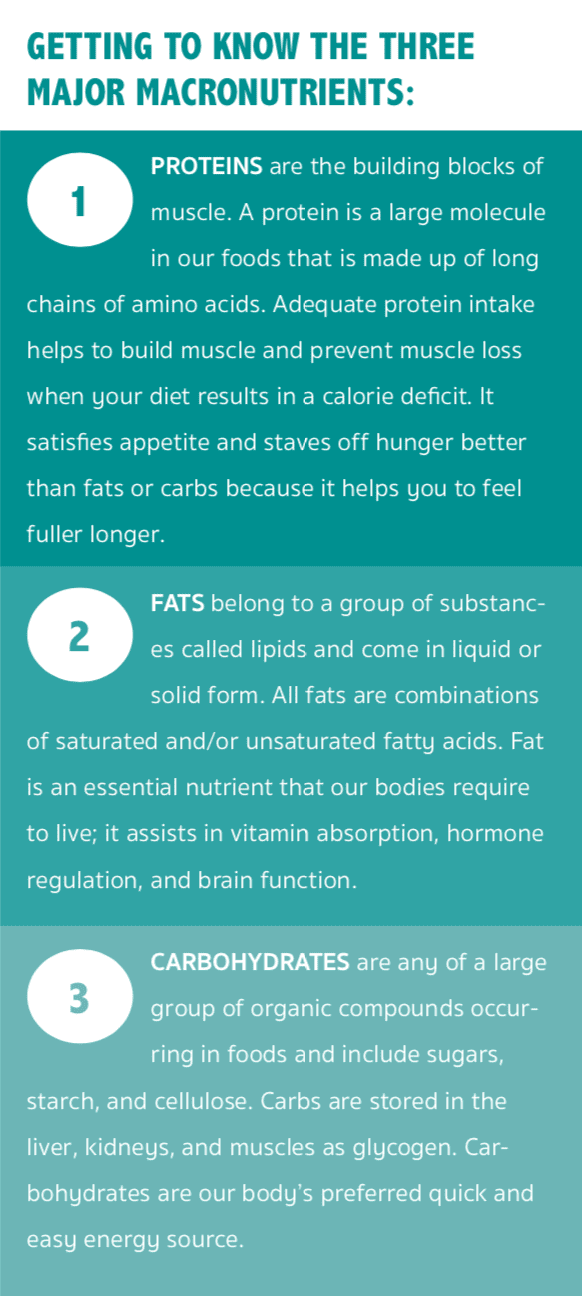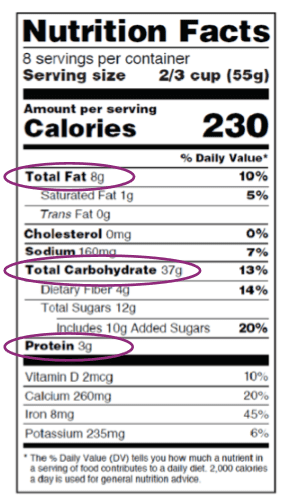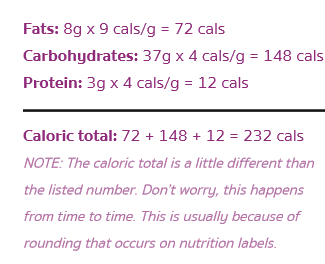Macros Summary
Two years ago if you had asked me what “macros” were I would have stared at you with a blank face and my mind would have started to drift to thinking about macaroni and cheese. In the last several year “macros” have become quite the buzz word and it may feel like everyone is talking about counting them right now. The reason is simple – it works. By setting and tracking your macros you get the right nutrition in the right ratios to support your performance, physique, and health goals. It provides structure yet with enough latitude to build a menu that works for YOU.
Wait a minute, let's back up.
What are “Macros”?
With the risk of sounding too “science-y” here's the definition: a macronutrient is any of the nutritional components of the human diet that are required in relatively large amounts: protein, carbohydrates, and fats.
Macros are what make up the calories of your food. 
When we say “counting your macros,” we’re talking about tracking your calories, but specifically breaking those calories down into your intake of carbs, fat, and protein.
Why count macros?
Losing weight really comes down to eating fewer calories than you expend. Cutting calories by any method is going to result in weight loss; however, the quality and permanence of that weight loss is vastly different. Instead of just counting general calories, knowing how much of each macronutrient to include in your diet yields better results.
For example, if your typical diet and exercise puts you in a caloric deficit (eating fewer calories than you use each day) but you aren’t eating enough protein, your body will break down muscle for use as energy. If you aren’t getting enough carbohydrates, you’ll likely feel weak and unable to perform well during workouts. Carbs are fuel! Lastly, not getting enough fat in your diet can mess with your hormones, which can make your weight loss stall or even make it more difficult for you to build muscle, since eating healthy fats can naturally boost your levels of growth hormones.
Yes, you can lose weight by cutting calories, but we aren’t just interested in dropping weight. We want to lose fat, and we want a good-looking, athletic, healthy body. For that, counting calories isn’t enough—you need to count your macros.
Each macronutrient contributes calories to your food. Here's how much:
How do I find out the macros of the food I eat?
Most foods you eat have a nutrition label that looks like this:
On the nutrition label, you will always see the three macronutrients listed with the number of grams the product contains.
In this nutrition label, you can see the following:
• 8g of fat
• 37g of carbs
• 3g of protein
Based on the caloric value for a gram of each of the macro nutrients listed above (1 gram carb = 4 calories, 1 gram protein = 4 calories, 1 gram fat = 9 calories), you can see how this product’s 230 calories are broken into the three macros:
If what you are eating doesn’t have a nutrition label (think: an apple), then you can use a database (like MyFitnessPal) to calculate the macronutrients.
Why can't I just cut out carbs or sugar to lose weight?
Cutting calories in any form is going to help you lose weight. But if you tell me that you aren’t going to eat any carbs or sugar ever again (or any other extreme restriction used to lose weight), then I’d say you have more willpower than 99% of the population. Chances are you will “mess up” by eating something off-plan and then feel guilty. With counting macros (you will also hear it called IIFYM – If It Fits Your Macros – or flexible dieting), there aren’t “good” and “bad” foods; it’s all just food. Flexible dieting is built on the basic knowledge of certain macronutrients and gives you a precise amount of each macronutrient to include in your diet. If you want ice cream for dessert, have it! You just have to make sure not to go over your daily allotment of carbs or fat. If you fit it into your macros, it’s not a cheat, it’s not bad—it fits! And if it fits your macros, you can eat it guilt-free and without feeling like you “cheated” on your diet. This is a sustainable way of eating.
Don’t get me wrong; it would be really hard to eat processed foods and treats all day long but still hit your macros. Most of the food you consume needs to be nutrient-dense food like lean meats, whole grains, fruits, and vegetables. But the beauty of flexible dieting is that you can easily make room for treats and still reach your weight-loss goal. It’s a moderate, healthy way to approach food.








Leave a Reply